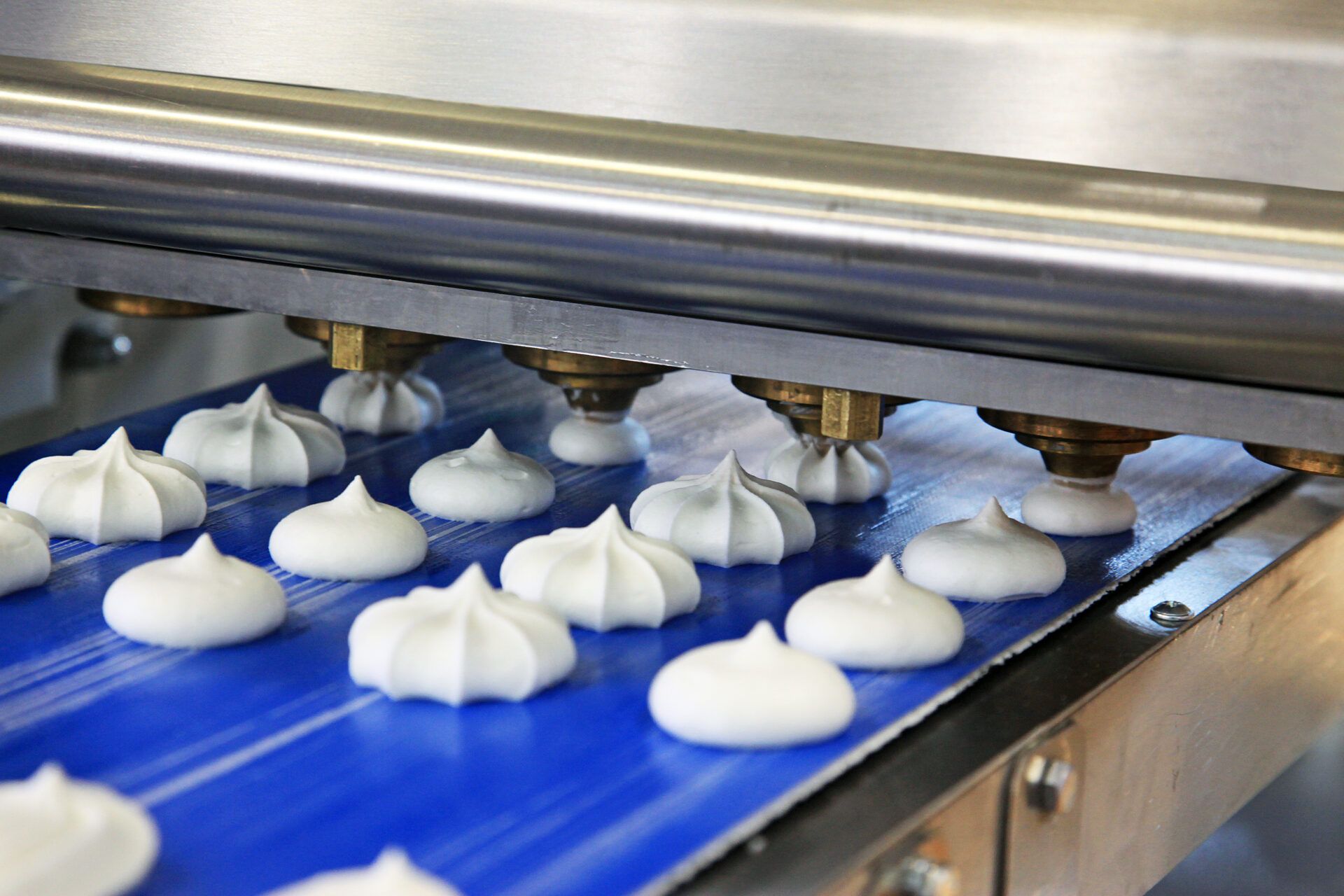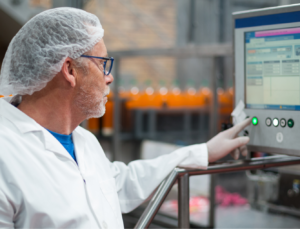Four Key Ways OEE Benefits Food & Beverage Manufacturers

If you’re a food and beverage manufacturer, you know that you used to have more time to improve your processes. You could run lines for months or even years before a new variable was introduced. But, these days, ever-changing consumer requirements and preferences often force you to adjust more frequently — and monitor production with more accuracy than ever.
To stay ahead of the game, you need deeper insights into the performance of your production lines. And operators and plant managers need real-time information to help them streamline changeovers and optimize availability, performance, and quality across every batch of product produced.

To accomplish this, tracking Overall Equipment Effectiveness (OEE) is essential. Why? OEE is one of the best ways to measure the effectiveness of manufacturing operations — a “must-calculate” metric.
By identifying losses and causes of production slowdowns due to equipment issues, OEE gives you powerful insights into the effectiveness of production systems and shows you where you need to improve manufacturing operations.
Put another way, OEE tells you how much manufacturing time is truly productive. It pulls runtime, downtime, and cycle-time data captured via sensors on production lines to give you visibility into production line performance, helping you drive continuous improvement.
Let’s take a look at the four key benefits of tracking OEE and why OEE is such an important part of Operational Performance Management (OPM) software solutions.
4 Key Ways OEE Benefits Food and Beverage Manufacturers
1. Consolidate Critical Performance Metrics
OEE itself is an important KPI, offering an overview of a plant’s effectiveness by consolidating availability, performance, and quality metrics into one formula. You can compare OEE across products, lines, plants, and even business units. OEE as part of broader operational performance management (OPM) solution like Ekho gives you the flexibility to configure any KPI you want to track.
The three core OEE-related KPIs for improving performance for food and beverage manufacturing are:
Availability — the percentage of scheduled time that the line or machine is available to operate
Performance — the speed at which a line runs as a percentage of its target speed
Quality — the good units produced as a percentage of total units started
It’s important to note that, despite the digital tools available, manually tracking KPIs and production events — a difficult, slow, and error-prone process — is still common practice today. Learn why going digital is critical to your success in our blog post, “Still Using Paper on the Plant Floor? Five Reasons to Go Digital Now.”
Tracking OEE using an OPM software solution like Ekho gives you real-time views into the most important performance metrics, uncovering where production is good, lagging, or flat. By consistently collecting and analyzing data from line sensors, OPM software gives you a quick understanding of critical KPIs so you can address issues faster, more accurately, and with less manual effort.

2. Improve Equipment Performance and Maintenance Scheduling
In addition to improving overall plant performance, OEE can help identify failure points (equipment failures) and highlight areas for improvement in your process. With links to production line sensor data, OEE / KPI dashboards within the OPM solution alert you to issues that could cause problems downstream that significantly impact line performance.
In addition, using sensor data to schedule downtime for routine maintenance and checks is much more efficient than having downtime due to machine break. OEE / KPI dashboards give plant managers the real-time insights they need to more effectively schedule maintenance.
3. Fine-Tune Your Process in Real-Time
In food and beverage manufacturing, materials can’t always be re-worked. The threat of wasting raw materials is very real. Factors such as expiration dates make it important to resolve production issues quickly, making real-time views of line performance imperative for taking proper corrective action on batches currently in production.
For this reason, OPM software solutions like Ekho give you more than just data and KPI tracking. They can be configured to reflect your process and your workflows, sending automatic alerts and alarms to the right people so that any issues can be promptly addressed to minimize impact on production. This live, continuous loop of real-time views, data, and alerts results in optimized operations, reduced re-work, more on-time shipments, higher customer satisfaction, and, ultimately, an increase in profits.
4. Drive Continuous Improvement
OEE gives food and beverage manufacturers the information they need to make short- and long-term improvements. To effectively use OEE for continuous improvement, everyone from top management to the plant floor must recognize OEE as crucial to driving process improvement. OEE data also needs to be digitized and shared across the organization via intuitive dashboards, metrics, and graphs that show real-time progress on the plant floor.
Summary

Let’s review how OPM solutions help you automate — and reap the benefits of — measuring and analyzing OEE across your organization:
Improved productivity — With insights into trends across shifts, lines, and equipment, OPM software allows you to make meaningful changes that can drive the performance of both your employees and machines.
Better quality — Tackle quality issues by identifying the problems which could lead to rework and non-conforming material.
Accelerated throughput — Identify and address interruptions in your processes with OPM software’s intuitive reporting features. Use your findings to eliminate repetitive or wasteful work and drive throughput.
Higher yield — Use OPM software’s root cause analysis and alerts to dive deeper into issues affecting yield.
Reduced costs — With the ability to improve performance, reduce waste and rework, and accelerate production, watch as your plant’s overall costs decrease.
Ekho OPM is available now. For more information get the product sheet or book a demo.
Will you be at the Sweets & Snacks Expo in Chicago May 23–24? CLICK HERE to meet with us at the show!
Ekhosoft provides Operational Performance Management software that empowers teams with the critical insights and real-time visibility they need to uncover performance issues faster and create action plans to drive improvements.
© 2024 Ekhosoft. All rights reserved.